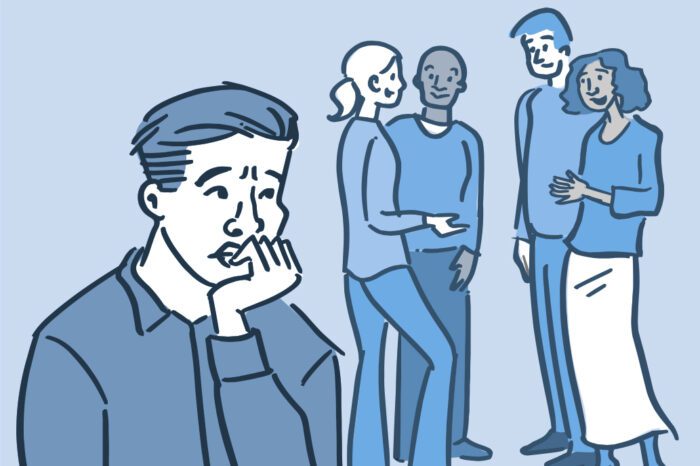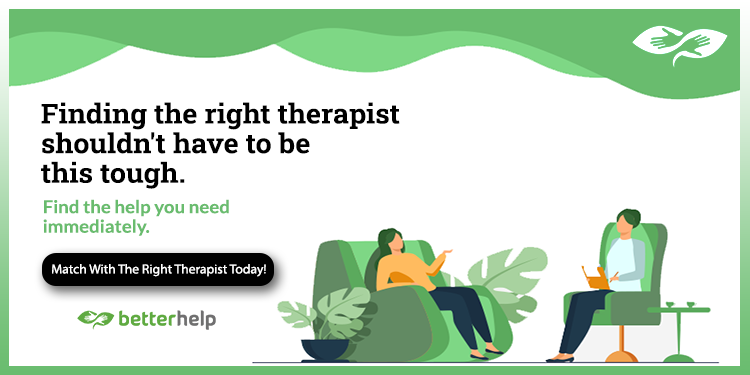How to Overcome Anxiety: A Practical Guide to Conquering Fear and Returning to Balance
Anxiety is one of the most common mental health problems faced by people worldwide. If you feel like fear and worry constantly follow you, know that you are not alone. Millions of people experience anxiety daily, and the good news is that there are effective methods to overcome it.
What is Anxiety and Why Does it Occur?
Anxiety is a natural response of our body to stress and potential danger. In the past, this system was crucial for survival – it enabled us to react quickly to threats like predators. However, in the modern world, our brain often activates this system even when there is no real physical danger.
When we are in a state of anxiety, our body goes through a series of physiological changes. Our heart beats rapidly, breathing becomes shallow, muscles tense up, and the mind becomes flooded with worries. These reactions can be extremely uncomfortable and disruptive to daily life.
Causes of Anxiety
Anxiety can arise due to various factors:
Genetic Factors: Research shows that the tendency toward anxiety can be inherited. If your parents or close relatives had anxiety problems, there’s a higher likelihood that you will experience it too.
Traumatic Experiences: Past traumatic events can leave deep traces in our nervous system. The body “remembers” trauma and may react anxiously to situations that remind it of past unpleasant events.
Chronic Stress: Long-term exposure to stress can exhaust our resources for coping with problems and lead to chronic anxiety.
Social Factors: Social pressure, work problems, financial difficulties, or relationship issues can be triggers for anxiety.
Lifestyle Factors: Excessive consumption of caffeine, alcohol, lack of sleep, and poor diet can worsen anxiety symptoms.
Anxiety Symptoms You Need to Recognize
Anxiety can manifest in different ways, and it’s important to recognize the symptoms so you can take appropriate steps:
Physical Symptoms:
- Rapid heartbeat or feeling like your heart will “jump out”
- Shortness of breath or feeling of suffocation
- Sweating, trembling, or shaking
- Nausea or digestive problems
- Headaches or muscle tension
- Fatigue or feeling of weakness
- Sleep problems
Emotional Symptoms:
- Constant worry or fear
- Feeling nervous or restless
- Irritability or touchiness
- Feeling that something bad is about to happen
- Difficulty concentrating
- Feeling of losing control
Behavioral Symptoms:
- Avoiding certain situations or places
- Need for constant reassurance from others
- Excessive preparation for situations
- Procrastination or avoiding responsibilities
- Physically restless behavior
How the Body Reacts to Anxiety
Understanding what happens in your body during an anxiety attack can be extremely helpful. When our brain perceives a threat, the sympathetic nervous system is activated – the part of the autonomic nervous system responsible for the “fight or flight” response.
This process begins in the amygdala, the part of the brain that functions as a danger alarm. When the amygdala detects a threat, it sends signals to the hypothalamus, which then activates the adrenal glands to release stress hormones like adrenaline and cortisol.
These hormones prepare the body for action:
- Increase heart rate to deliver more oxygen to muscles
- Speed up breathing
- Redirect blood from digestive organs to muscles
- Increase blood sugar levels for quick energy
- Heighten senses
While these reactions are useful in real dangerous situations, they can be overwhelming when activated due to imaginary or exaggerated threats.
Natural Ways to Deal with Anxiety
1. Breathing Techniques
One of the simplest and most effective methods for reducing anxiety is controlled breathing. When we’re anxious, our breathing becomes shallow and rapid, which can worsen symptoms.
Diaphragmatic Breathing:
- Place one hand on your chest, the other on your stomach
- Breathe slowly through your nose so that the hand on your stomach rises, not the one on your chest
- Exhale slowly through your mouth
- Repeat for 5-10 minutes
4-7-8 Technique:
- Inhale through your nose counting to 4
- Hold your breath counting to 7
- Exhale through your mouth counting to 8
- Repeat the cycle 3-4 times
2. Grounding Exercises
Grounding techniques help you return to the present moment when anxiety pulls you into a spiral of worry.
5-4-3-2-1 Technique:
- Identify 5 things you can see
- 4 things you can touch
- 3 things you can hear
- 2 things you can smell
- 1 thing you can taste
Physical Grounding:
- Squeeze and release different muscle groups
- Change your body position
- Touch different textures around you
- Feel your feet on the ground
3. Movement and Physical Activity
Physical activity is one of the most powerful natural antidepressants and anxiolytics. Exercise helps the body “burn off” stress hormones and stimulates the production of endorphins – natural “happiness hormones.”
Effective Activities for Reducing Anxiety:
- Brisk walking or light jogging
- Yoga and stretching
- Dancing
- Swimming
- Gardening
- Any activity that involves rhythmic movement
4. Mindfulness and Meditation
Mindfulness practice helps develop awareness of the present moment and reduces the mind’s tendency to “wander” into worrying thoughts about the future.
Simple Mindfulness Exercise:
- Sit comfortably and close your eyes
- Focus on your breath
- When you notice your thoughts wandering, gently bring them back to your breath
- Start with 5 minutes daily and gradually increase
5. Proper Nutrition
What we eat directly affects our mood and anxiety levels.
Foods That May Worsen Anxiety:
- Caffeine (coffee, tea, energy drinks)
- Alcohol
- Processed foods high in sugar
- Foods with artificial additives
Foods That May Reduce Anxiety:
- Fatty fish rich in omega-3 fatty acids
- Nuts and seeds
- Green leafy vegetables
- Fermented foods for gut health
- Complex carbohydrates
When to Seek Professional Help
While self-help techniques are useful, sometimes anxiety can be so intense that it requires professional intervention. You should consider seeking help if:
- Anxiety significantly affects your daily life
- You avoid activities you once enjoyed
- You have regular panic attacks
- You use alcohol or other substances to cope
- You have suicidal thoughts
- Symptoms worsen despite self-help
Types of Therapy for Anxiety
Cognitive Behavioral Therapy (CBT): Helps identify and change negative thought patterns that contribute to anxiety.
Exposure Therapy: Gradual and controlled exposure to anxiety-provoking situations to reduce fear.
Body-Focused Therapy: Focuses on bodily sensations and helping the body return to a state of safety.
EMDR (Eye Movement Desensitization and Reprocessing): Particularly useful for anxiety arising from trauma.
The Importance of the Idea “I Am Free”
Creating an Anxiety Management Plan
Developing a personal anxiety management plan is crucial for long-term success. Here are steps you can take:
1. Identify Your Triggers
Keep an anxiety journal where you record:
- When anxiety occurs
- What’s happening at that moment
- How you feel physically and emotionally
- What helps you calm down
2. Create a Self-Care Routine
- Regular exercise
- Adequate sleep (7-9 hours)
- Healthy meals at regular intervals
- Time for relaxation and hobbies
- Social contact with close people
3. Develop a Repertoire of Coping Techniques
Prepare an “emergency toolkit” with techniques that help you most:
- Breathing techniques
- Mantras or positive affirmations
- Contact person you can call
- Meditation apps
- List of activities that calm you
4. Build a Support System
Anxiety can be isolating, but support from others is extremely important:
- Share your experiences with trusted people
- Join support groups
- Consider professional therapy
- Educate close ones about anxiety
Changing Your Relationship with Anxiety
One of the most important steps in dealing with anxiety is changing our relationship with it. Instead of experiencing anxiety as an enemy to be destroyed, we can learn to understand it as a signal our body sends us.
Acceptance vs. Fighting
Paradoxically, the more we fight against anxiety, it often becomes stronger. Acceptance doesn’t mean surrender – it means acknowledging that anxiety exists without constantly trying to eliminate it.
Practical Steps for Acceptance:
- Notice anxiety without judgment
- Tell yourself: “I’m feeling anxiety and that’s okay”
- Allow the feeling to exist without needing to change it immediately
- Remind yourself that feelings are temporary
Curiosity Toward Fear
Instead of being afraid of anxiety, we can develop curiosity toward it:
- What is my body trying to tell me?
- Is there some basic need that isn’t being met?
- What’s the message behind this feeling?
Long-term Strategies for Mental Health
Building Resilience
Resilience is the ability to recover from stressful situations. We can build it through:
Developing Self-Awareness: Regular check-ins with yourself about how you feel and what you need.
Cultivating Self-Compassion: Treating yourself with the same kindness you would treat a good friend.
Setting Boundaries: Learning to say “no” and protect your own energy.
Finding Meaning: Connecting with something greater than yourself, whether through spirituality, volunteering, or creativity.
Creating a Supportive Environment
Our physical and social environment significantly affects our mental health:
Physical Environment:
- Organize a space that calms you
- Spend time in nature
- Reduce exposure to environmental stressors
Social Environment:
- Surround yourself with positive people
- Limit time with energy-draining people
- Build meaningful connections
Digital Environment:
- Limit social media time
- Choose positive and educational content
- Create “digital detox” periods
Myths and Truths About Anxiety
Myth: Anxiety is a sign of weakness
Truth: Anxiety is a medical condition that can affect anyone, regardless of character strength. Many successful and strong people suffer from anxiety.
Myth: You can simply “stop being anxious”
Truth: Anxiety isn’t a choice. It takes time, patience, and often professional help to manage it.
Myth: Medication is the only solution
Truth: While medication can be helpful, there are many alternative and complementary strategies that can be equally effective.
Myth: Anxiety will go away on its own
Truth: Untreated anxiety often worsens over time. An active management approach is crucial.
 Specific Strategies for Different Types of Anxiety
Specific Strategies for Different Types of Anxiety
Social Anxiety
Gradual Exposure: Start with smaller social situations and gradually expose yourself to larger groups.
Conversation Preparation: Prepare several conversation topics in advance.
Focus on Others: Instead of focusing on your own behavior, try to become interested in other people.
Generalized Anxiety
“What If” Technique: When you catch yourself in a “what if” spiral, ask yourself: “What’s the worst possible outcome and how would I deal with it?”
Scheduled Worry Time: Set aside 15 minutes daily for “worry time” and postpone all anxious thoughts to that time.
Active Problem Solving: For worries you have control over, make a concrete action plan.
Panic Attacks
Recognizing Early Signs: Learn to recognize early signs of panic attacks so you can react quickly.
“Surf the Wave” Technique: Instead of fighting panic, allow it to happen, knowing it will pass.
Grounding Techniques: Use your senses to return to the present moment.
Creating a Safe Space
It’s important to create physical and emotional spaces where you feel safe and calm:
Physical Safe Space
- Designate a corner in your home that’s just yours
- Decorate it with things that calm you
- Keep necessary helpful materials within reach
Emotional Safe Space
- Develop an inner dialogue that’s supportive
- Learn to recognize and respect your own boundaries
- Cultivate self-compassion
Advanced Techniques for Deeper Healing
Working with the Inner Critic
The inner critic often amplifies anxiety. Here’s how you can deal with it:
Identifying Voices: Notice when your inner voice becomes critical or fearful.
Questioning: “Is this thought helpful? Is it accurate? What would I tell a friend in this situation?”
Developing an Inner Mentor: Cultivate a wise, compassionate side of yourself that can provide comfort.
Working with the Past
Often anxiety has roots in past experiences:
Recognizing Patterns: Notice how past experiences reflect on current reactions.
Integrating Experiences: Work on integrating past experiences in a healthy way.
Creating New Narratives: Rewrite your story in a way that empowers you.
Conclusion: The Path to Freedom from Anxiety
Dealing with anxiety is a process, not a destination. Every step you take toward understanding and managing your anxiety is a step toward greater freedom and well-being.
Remember:
- You are not alone in this struggle
- Recovery is possible
- Small steps lead to big changes
- Seeking help is a sign of strength, not weakness
Anxiety doesn’t have to control your life. With the right tools, support, and approach, you can learn to live with anxiety in a way that doesn’t limit your possibilities or happiness. Start with one technique today and be patient with yourself as you navigate this journey toward healing.
Your mental health is worth every investment of time and energy. You deserve a life filled with peace, joy, and possibilities – and that life is available to you.
What does Somatic Experiencing therapy offer?
Keywords: I am free, psychotherapy, parents, parental trauma, somatic experiencing, authonomy, freedom, Licensed therapist near me in Manhattan NYC, Affordable therapy services in New York State, Holistic psychotherapy sessions in NYC, Somatic Experiencing therapy for trauma recovery in New York City, NARM therapy in Brooklyn, Licensed couples therapy in Manhattan, Gestalt therapy near me in NYC, Marriage counseling in Queens NYC, Therapy for anxiety treatment in NYC, Experienced psychotherapist in New York, Licensed psychotherapist near me in NYC, Somatic Experiencing therapy sessions in New York, Trauma therapy and counseling in Manhattan, Gestalt therapy sessions in New York City, Therapy sessions for emotional regulation in New York, Trauma therapy near me in Brooklyn New York, Licensed mental health therapist in Manhattan NYC, Depression therapy in New York, New York City therapist experienced in PTSD treatment
Contact us: Feel and Heal Therapy Office
For companies: Creative Manager








